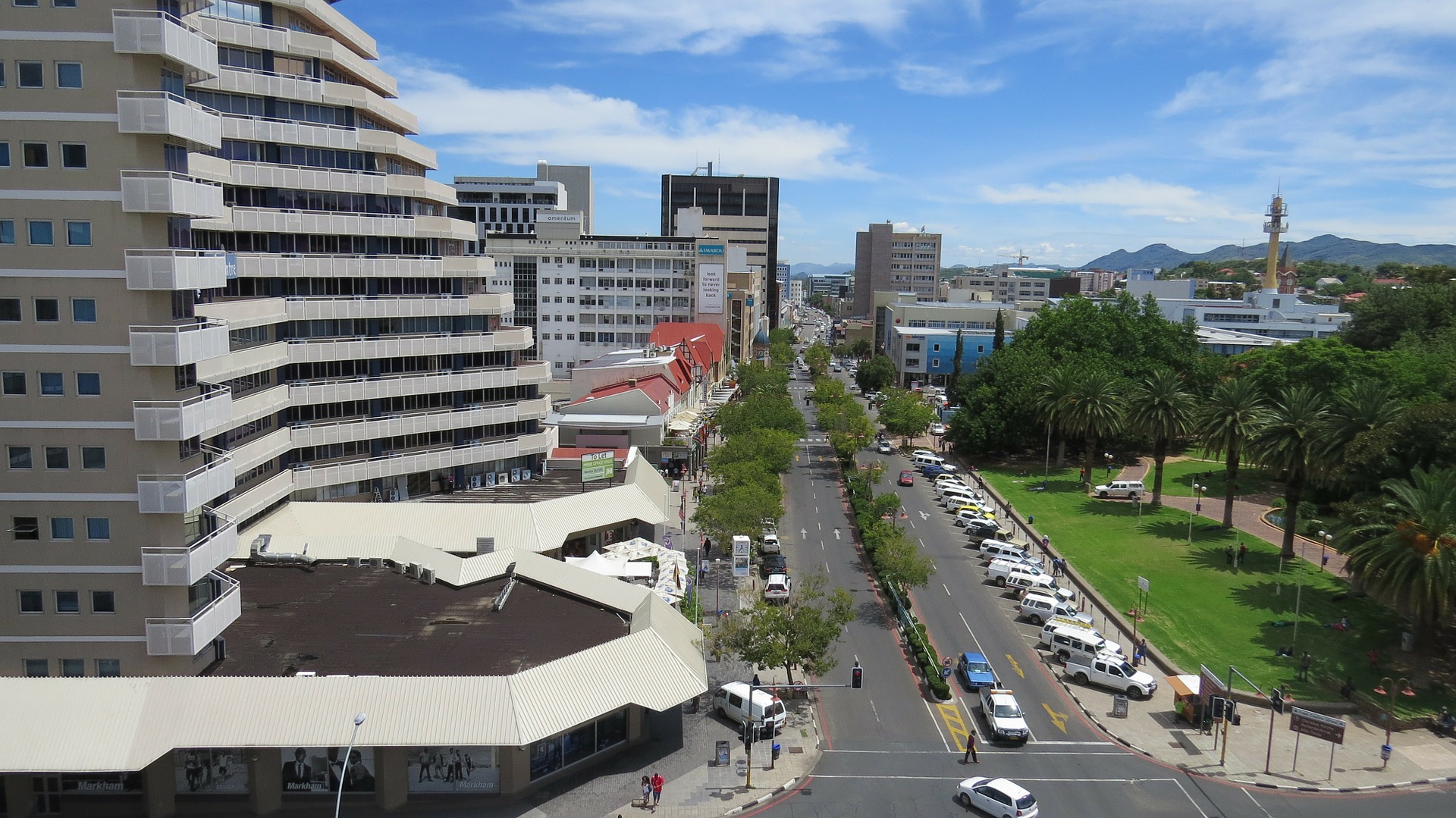Namibia, a country known for its vast deserts, rugged mountains, and diverse wildlife, is undergoing a significant demographic transformation. Over the past few decades, the trend of urbanization has been accelerating at a remarkable pace, with more and more Namibians choosing to leave rural areas and settle in cities. In fact, 54% of Namibia’s population now resides in urban areas, a sharp rise from previous decades. This urbanization surge is reshaping the country’s economic, social, and political landscape, with profound implications for development and governance.
In this article, we will delve into the factors driving Namibia’s urbanization, explore the challenges and opportunities that come with this demographic shift, and examine the broader impact of this trend on the nation’s future.
Understanding Namibia’s Urbanization Trend
Urbanization refers to the process by which people move from rural to urban areas, resulting in the growth of cities and towns. Namibia’s urbanization rate has surged over the past few decades, reflecting a wider trend across Africa and the world. According to recent United Nations data, Namibia’s urban population is now at 54%, and the capital city of Windhoek alone is home to around 430,000 people, accounting for about 16% of the nation’s population.
This trend signifies a growing shift in the country’s demographic profile, with more Namibians seeking better living conditions, economic opportunities, and access to education and healthcare that cities offer. Urbanization in Namibia is not only reshaping the physical landscape but also influencing the social dynamics, economy, and culture of the country.
Factors Driving Namibia’s Urbanization Surge
Several key factors have contributed to Namibia’s rapid urbanization, transforming it from a predominantly rural society to one where more than half the population now lives in urban areas.
1. Economic Opportunities in Urban Areas
One of the primary drivers of urbanization in Namibia is the availability of economic opportunities in cities. While rural areas remain reliant on agriculture, which has limited potential for income growth and job creation, cities offer more diverse job opportunities in sectors such as mining, manufacturing, services, and tourism.
In particular, cities like Windhoek, Walvis Bay, and Swakopmund have become hubs for the country’s growing industries. Namibia’s expanding mining sector, including uranium, diamonds, and gold, has attracted workers from across the country, many of whom are moving to cities in search of better-paying jobs. Additionally, cities provide opportunities for small businesses, trade, and innovation, which further pull people from rural areas.
2. Improved Infrastructure and Access to Services
Urban areas in Namibia offer better infrastructure and access to essential services such as healthcare, education, and transportation. The growth of cities has been accompanied by improvements in roads, public transportation systems, and water and electricity supply, making life in urban areas more convenient and attractive. As rural areas often struggle with inadequate infrastructure and limited access to social services, many Namibians are drawn to cities where they can access better healthcare facilities, schools, and vocational training.
Moreover, urban areas tend to have more vibrant social and cultural life, offering greater opportunities for entertainment, arts, and community engagement. As the country’s urban areas expand, they become increasingly important centers of commerce, education, and social interaction.
3. Rural-Urban Migration and the Search for Better Living Conditions
Many Namibians migrate to cities in search of better living conditions. Rural areas, particularly in the country’s arid regions, often face harsh environmental conditions, including droughts, water scarcity, and poor agricultural yields. These challenges make it difficult for rural populations to maintain stable livelihoods. In contrast, cities offer better housing options, access to modern amenities, and a higher standard of living.
As rural areas become increasingly unable to support growing populations, many people seek the opportunities and advantages that urban life can provide, including higher wages, better housing, and more diverse career options. The migration from rural to urban areas is not only driven by economic necessity but also by the desire for a better quality of life.
4. Urbanization and Youth Population Growth
Namibia has a young population, with a large proportion of people aged 15-34. This youth bulge plays a significant role in the country’s urbanization trend. Young people are particularly attracted to cities for educational opportunities, job prospects, and the chance to experience modern lifestyles.
The country’s young population is moving to cities in large numbers, driven by the pursuit of higher education, better employment prospects, and greater social mobility. As a result, cities have become the focal point for the youth-driven migration trend, adding to the rapid urbanization of Namibia.
Challenges of Urbanization in Namibia
While urbanization brings many benefits, it also presents significant challenges for Namibia’s cities. The sudden influx of people into urban areas has strained the capacity of existing infrastructure and services. Among the challenges facing Namibia’s cities are:
1. Housing Shortages and Informal Settlements
One of the most pressing issues in Namibia’s cities is the shortage of affordable housing. As more people migrate to urban areas in search of better living conditions, the demand for housing has outstripped supply. This has led to the rapid growth of informal settlements or shantytowns, particularly in Windhoek and Walvis Bay.
These informal settlements are often characterized by poor infrastructure, lack of basic services, and overcrowding, which can result in unhealthy living conditions. While the government has made efforts to address the housing deficit through programs like the National Housing Enterprise (NHE), the challenge remains significant as the urban population continues to grow.
2. Unemployment and Underemployment
While urban areas offer job opportunities, they are also facing challenges related to unemployment and underemployment. Namibia’s cities are experiencing a growing population of job seekers, many of whom struggle to find stable employment. The youth unemployment rate in urban areas is particularly high, as many young people migrate to cities without the skills or qualifications needed for available jobs.
The combination of a growing population and limited job opportunities has led to high levels of poverty in some urban areas, as people turn to informal sector work or struggle to make ends meet. Addressing unemployment and ensuring that urban growth leads to sustainable job creation will be critical for Namibia’s long-term urbanization success.
3. Strain on Public Services and Infrastructure
As urban populations expand, the demand for public services such as healthcare, education, water, and sanitation has risen. In many cases, cities struggle to meet these needs, particularly in informal settlements where residents often lack access to clean water, healthcare, and reliable sanitation systems.
Waste management and traffic congestion are also growing issues, as more people and vehicles fill city streets. The need for urban planning and infrastructure development is crucial to ensure that Namibia’s cities remain livable, sustainable, and capable of meeting the demands of their growing populations.
Opportunities for Namibia’s Urban Future
Despite these challenges, Namibia’s urbanization presents numerous opportunities that could shape the country’s future for the better. Here are some key opportunities that come with the urbanization surge:
1. Economic Growth and Diversification
As cities grow, they become hubs of economic activity, offering opportunities for business development, investment, and entrepreneurship. The expansion of cities like Windhoek and Walvis Bay creates new markets and opportunities for industries to thrive, including tourism, technology, and manufacturing.
Urban areas also allow for greater economic diversification, as cities provide the infrastructure and services necessary to support a wide range of industries. By fostering a business-friendly environment, Namibia can unlock the potential of its cities to drive economic growth and create jobs.
2. Innovation and Technological Advancements
Urbanization can also serve as a catalyst for innovation and the adoption of new technologies. Cities are more likely to have access to advanced communications infrastructure, which fosters the growth of the digital economy. With a growing tech-savvy youth population, Namibia’s cities could become breeding grounds for technological innovation, startup culture, and smart city solutions.
3. Improved Access to Education and Healthcare
Urbanization offers greater access to education and healthcare services, which can improve the overall well-being of the population. Urban centers provide access to better schools, universities, and vocational training programs that can equip young people with the skills needed to thrive in a modern economy. Additionally, healthcare services in urban areas tend to be more advanced, providing better medical care and improving life expectancy.
Namibia’s urbanization surge presents both opportunities and challenges. The rapid growth of urban populations is reshaping the country’s cities, leading to greater economic activity, technological innovation, and improved living standards for many. However, the strain on housing, infrastructure, and employment opportunities highlights the need for strategic urban planning and development to ensure that cities remain sustainable and inclusive.
By addressing these challenges and harnessing the potential of its urban growth, Namibia can lay the foundation for a more prosperous, modern, and dynamic future, where the benefits of urbanization are felt by all segments of society. As the country continues its journey of urban transformation, it will need to balance growth with sustainability to ensure that cities become engines of opportunity and progress for all Namibians.
Join 'Namibia Today' WhatsApp Channel
Get the breaking news in Namibia — direct to your WhatsApp.
CLICK HERE TO JOIN












